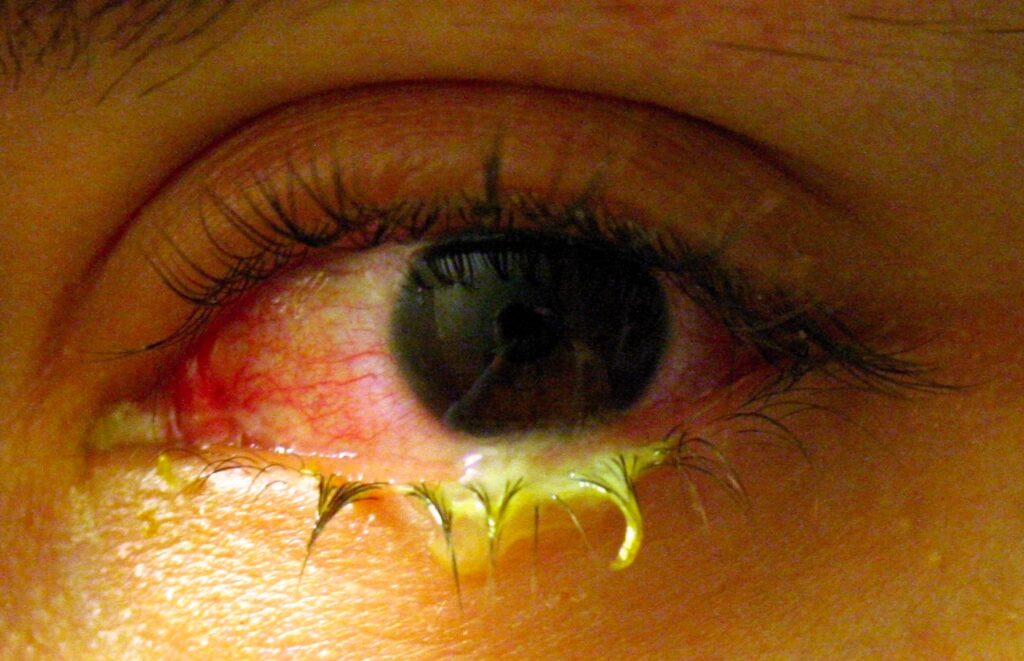Conjunctivitis

Conjunctivitis is the inflammation of the outer lining of the eye and eyelid, also known as the conjunctiva. When it becomes inflamed the blood vessels dilate and become more prominent, hence it’s nickname – pink eye. There are several types of conjunctivitis that are classified based on the nature and cause of the inflammation. The most common are Viral, bacterial, allergic and chemical.

BACTERIAL conjunctivitis is what typically comes to people’s minds when they think of conjunctivitis. However, not all conjunctivitis looks like this. In fact, allergic and viral conjunctivitis are more common. Purulent (or yellow/pus-like) discharge is a hallmark for conjunctivitis of the bacterial nature. The severity depends on the specific bacteria present and how prompt treatment is. Generally the anti-biotics prescribed by your optometrist will stop the inflammation and infection within the week.
The VIRAL form of conjunctivitis is highly contagious so care must be taken to not spread it to family and friends, as well as the other eye. It can often coincide with a flu or cold, or other upper respiratory tract infections. Unlike bacterial conjunctivitis, the discharge is generally clear and watery. Viral conjunctivitis is self-limiting and there are no drops that will cure it. It will last about 14 days but it is generally the worst, and you are the most contagious in the first 5 days. Liquid tears are generally used as a supportive therapy. Be vigilant with hygiene – wash your hands, don’t rub or touch your eyes, regularly wash pillow cases and refrain from using eye makeup.
ALLERGIC conjunctivitis is very common, particularly in children. Similar to other allergic reactions, allergens (dust mites, pollen, animal fur etc.) can trigger a series of inflammatory processes of the conjunctiva causing redness, a watery or white stringy discharge, and most notably, itchy eyes. Anti-histamine eye drops, lubricants and/or steroids will be prescribed to improve the symptoms and cold compresses (resting a wet flannel with cold water over the eyes) can provide great relief. Please refrain from rubbing the eyes!
CHEMICAL conjunctivitis results when the eye is exposed to chemicals that irritate the eye. This includes chemicals such as smoke or perfumes, but can also be due to certain ingested substances. This is not infectious and should be managed with lubricants and by avoiding further exposure to the chemical.
- Anyone with conjunctivitis should be examined by an optometrist as each different type has different consequences and treatments.
- Hygiene is imperative for the bacterial and viral forms to prevent spreading of the infection to your other eye or to people that you live/work with.
- Do not rub your eyes – use cold compresses instead.
- Make sure that you are taking care with your contact lenses and have annual check ups







